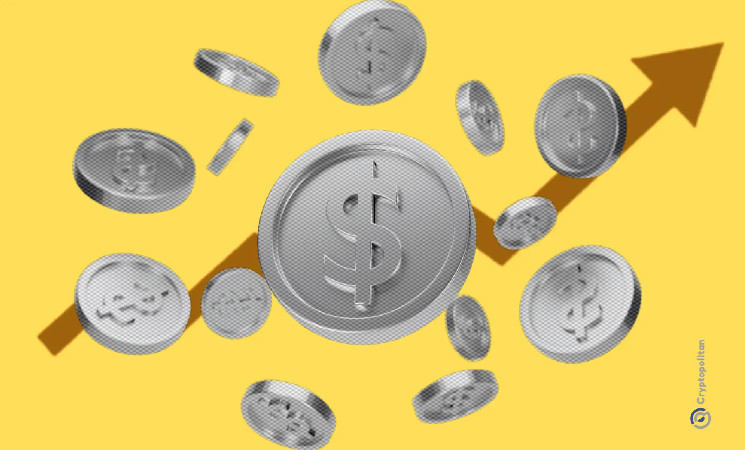Bridged or wrapped stablecoins now exceed $10B in value, highlighting the process of outflows from Ethereum. Both native and bridged stablecoins are highly influential in building liquidity on L2 and supplying DeFi apps with reserves.
The supply of stablecoins on L2 chains is now above $10B, based on data from GrowThePie. The expansion of stablecoins on the top L2 protocols was a slow process, depending on gradual bridging by whales and retail holders. L2 assets are still a small part of the total supply, but they serve a key purpose for DeFi and DEX. USDT and USDC are the most bridged stablecoins, but additional assets like USDS by Sky, USDe, or USDS may move through bridges.
The inflow of stablecoins tracked several trends over the past years. The VC-backed, large L2 Arbitrum and Optimism had a first-mover advantage, drawing in stablecoins earlier. Arbitrum is still the leader with $4.62B from stablecoin inflows.
Optimism main net had more gradual growth with a total of $1.32B. Linea, which overpromised, is still at $47M in net inflows, and even marking outflows in the past few weeks.
The inflow of stablecoins coincides with the shift of economic activity from Ethereum to L2. Despite this, USDT is still the most active in its Ethereum and TRON versions, used on centralized exchanges and for payments. L2, however, is more widely used for high-capacity tasks such as DEX trading and DeFi lending.
The number of protocols on L2 chains roughly coincides with the availability of stablecoins. For L2 projects, supply under $500M is a sign the network is still niche, lacking some of the key apps and protocols, as well as DEX trading volumes. Arbitrum is among the leaders again, with 697 protocols tapping the available stablecoins.
One of the problems of L2 inflows is the fragmentation of liquidity. Once value enters an L2 chain, it stays mostly within the confines of its apps. Interoperable apps are still rare, and in fact require bridging that happens in the background.
Ethereum loses value, users to L2
The inflows from Ethereum accelerated in the past month, with a mix of stablecoins and wrapped tokens. Arbitrum drew in $2.7B from the main network, of which around 28% were wrapped stablecoins. Overall, Arbitrum carries 51.5% of all inflows with the rest spread to Base, Optimism, and Polygon.
Arbitrum and Polygon also had the highest USDT and USDC activity in the past three months, surpassing even some of the big L1 chains. The activity was due to the first mover advantage and from hosting lively versions of Uniswap.
For the last three months, around $4.98M in value moved from Ethereum, of which stablecoins made up a significant share. Polygon’s inflows held more than 50% in stablecoins. Base had the smallest inflows from Ethereum-based assets, due to launching native USDC.
The presence of stablecoins alone is not enough to drive network usage. In the past months, Ethereum saw an outflow of users as most of DeFi switched to L2 due to speed and lower fees.
Ethereum has not tried to fight for users and still enjoys the fees generated by using native USDT. However, the network does not earn or burn ETH due to L2 activity. For now, L2 is using Ethereum for free, without returning value or sharing their profits.
Base drives USDC adoption
The steepest inflow of stablecoins happened on Base, Coinbase’s tokenless protocol. The Base USDC supply expanded above that of OP Mainnet and may be on track to flip Arbitrum. For the past months, expansion on Base slowed down compared with the initial steep rise in USDC supply. Base is also among the most active users of stablecoins for microtransactions.
Base is also the biggest host of USDC tokens after Ethereum, surpassing other L2. Base holds 3.16B USDC, compared to 2.57B on Solana. Ethereum is still holding a first-mover advantage with more than 26B tokens. Base is also one of the few networks to drive the adoption of Euro-based EURC.
Arbitrum and Optimism taken together host just 1.6B USDC, with a prevalence of USDT and other niche tokens. Base also has the advantage of native tokens with lower fees and no need to bridge back to the Ethereum version.
Cryptopolitan reporting by Hristina Vasileva
 cryptopolitan.com
cryptopolitan.com
